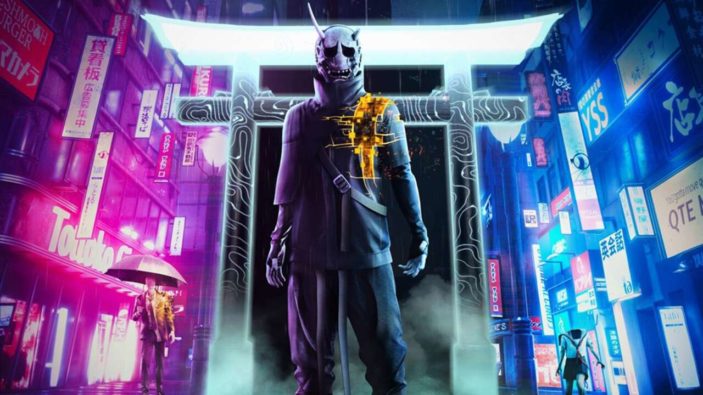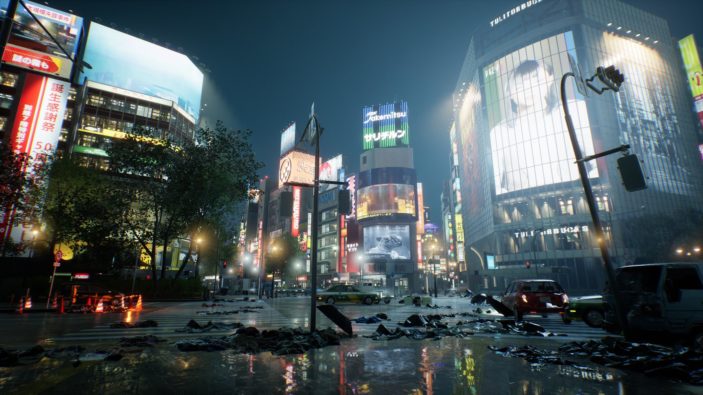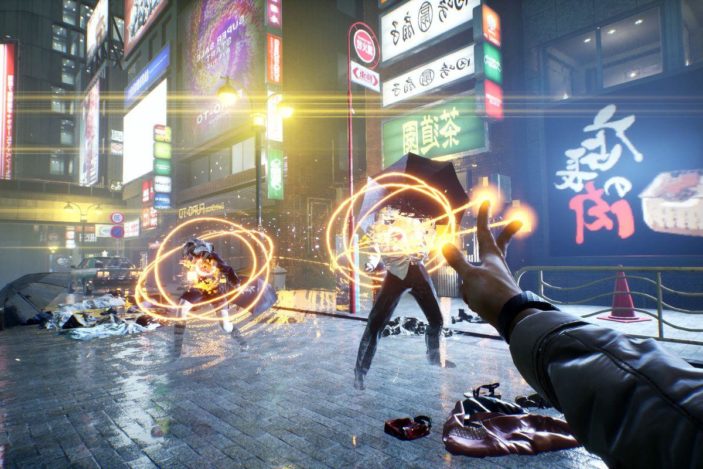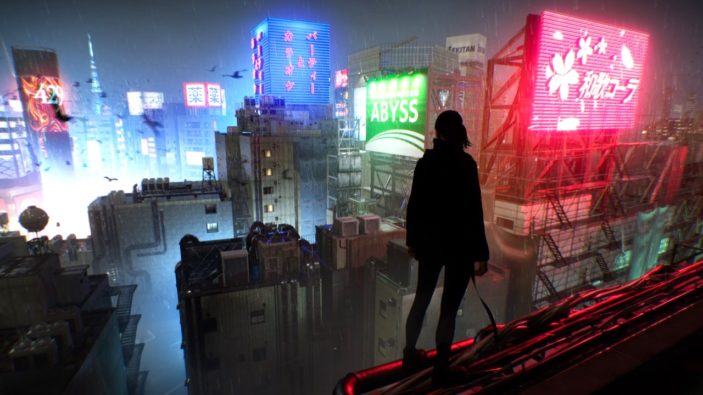
If we knew very little about Ghostwire: Tokyo up until this week, the tables have truly turned. We got the chance to check out 30 minutes of gameplay last month, and our impressions sent us through a loophole of spooky enemies, whacky finger guns, and a soul-saving mission that sends you throughout the hollow streets of Tokyo. But through it all, we were mightily impressed.
Where Did They Go?
The premise of Ghostwire: Tokyo seems simple at first, but slowly dives into an intricate web of intrigue as you run, climb, jump throughout a wide and vertically rich rendition of Tokyo. Everyone is missing. For one reason or another, 99% of the population has vanished, leaving the city of Tokyo haunted by mythological Japanese spirits. You play as Akito, one of the lucky few leftovers, who soon gains supernatural powers which coincidentally help fight and banish the surrounding spirits. Oh yeah, we also forgot to mention, a demon named K.K. now inhabits your body. Go figure. That being said, Ghostwire: Tokyo throws players directly into the fray, as they fight, navigate and deduce in order to save the city and its inhabitants.

The Tools of the Trade
The first noticeable aspect of Ghostwire: Tokyo is its combat. Imbued with powers known as ‘Ethereal Weaving’ Akito is able to combine the various elements to shoot projectiles straight from his hands. The combat is fast-paced and fierce, with multiple enemies presenting various challenges and effective approaches. Be it up close or from afar, Akito”s attacks yield a range of results, with the added ability to charge up attacks for additional damage. Enemies are incredibly intimidating, from Slender Man-like creates who always approach you with a brisk walk which looks as unnatural as it feels. Other enemies will utilise their surroundings and agility to get up close and personal, should you wish to let them get that close. The eerie atmosphere of the city creates a consistent layer of tension all without feeling too overbearing. Akito feels capable and the fast-paced combat always allows you to feel like the fight is in your hands, as opposed to more traditional survival horror games that force you to stand on the back foot, short on ammo and supplies.
You’ll also get the chance to upgrade your abilities and weapons through a more traditional RPG progression system that allows you to spend skill points in order to unlock additional powers. At some point in the story, Akito will also gain access to a bow and arrow for slightly more destructive tactics within combat.

A Delightful Stroll Through Tokyo
The open world of Tokyo, while large and visually diverse, feels a little more straightforward. A mini-map in the bottom corner of your HUD will point you in the right direction, packed with side quests and Torii gates. Torii gates are usually surrounded by fog and must be cleansed by defeating nearby enemies. Once defeated, the Torii gates will open and the surrounding souls in the area will be cleansed and freed. It’s clear that the city, while desolate, is doing its best to keep you on your toes.
Every now and then, the narrative will guide you into enclosed spaces, such as building apartments, where Akito must discover specific clues as to the whereabouts of certain souls. In these moments, Akito will be able to access, ‘Spectral Vision’, a detective mode that allows the player to point out areas and items of interest. The horror elements show their hand quite quickly during these sequences, as the apartment building will suddenly trap you inside of it, bending and flipping each room to disorient and redirect you as you try to escape. The sudden shift in tone and pace is all but jarring, as you do your best to turn your detective skills into running skills.
The open-ended nature of the city is no stranger to verticality. Buildings can be scaled and traversed in order to shorten the length of your average trip around Tokyo. Akito will also be able to access his ‘Tengu Ability’, which acts as a fancy grappling hook that allows the player to reach higher areas of the map with ease. I wouldn’t consider the traversal to be as fluid and complex as the parkour in something like Dying Light, but it still feels incredibly smooth and fast-paced.

Ghostwire: Tokyo feels like a game of many ideas and mechanics crashing together as one. Fast-paced combat, open-world traversal, traditional RPG progression, and a consistently creepy vibe that is sure to develop as the narrative progresses. We honestly can’t wait for more. Developer Tango Gameworks had also recently shown off 20 minutes of gameplay footage which you can check out for yourself below.
You won’t have to wait much longer, however, as a surprise release date had also been dropped, with the game set to release on PlayStation 5 and Windows PC on 25 March 2022.
